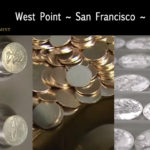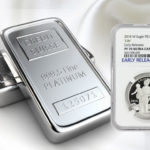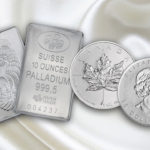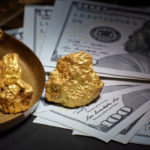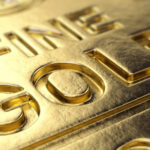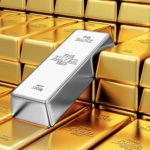history of precious metals
-
How Modern Coins are Made
(Read More)The earliest known examples of coins date back to 7th century Turkey. They were irregular in shape, stamped on one side, and made from a gold-silver mix, known as electrum. The Greeks refined the minting process, and later the Chinese, who were the first to use non-precious metals in their coins—a practice that soon spread to the West and became common among developed countries. Coin manufacturing techniques continued to evolve throughout Western cultures up through the industrial revolution and the invention of high-powered presses. Since then, with the exception of computer advancements, the coin making process has remained relatively unchanged.
-
Platinum
(Read More)To gain an understanding of how rare Platinum is, consider this… all the Platinum ever mined could fit in the living room of an average sized home! It’s also scarce. While Gold is relatively abundant in many parts of the world, large Platinum deposits have only been found in two places; South Africa and the Ural Mountains of Russia. 10 tons of ore must be removed from the earth and painstakingly processed to yield a single ounce of this precious metal. It has been sought after by everyone from the ancient Egyptians to Louie the 16th, who proclaimed it, “the only metal fit for royalty”. It’s the ideal metal for jewelry because Platinum is so hard; many claim it never wears down. Because of these qualities, it’s no wonder Platinum is often referred to as “The Rich Man’s Gold”. And many industries have found this precious metal beneficial as well.
Besides jewelry, Platinum can be found in laboratory equipment, electrical contacts, electrodes, thermometers and dentistry equipment. Over one-third of all Platinum mined and processed each year is used in catalytic converters for automobiles. The increased automobile emission standards around the world now require auto manufacturers to use more and more Platinum in catalytic converters. Watchmakers appreciate the unique properties of Platinum because it neither tarnishes nor wears out. Rolex, Breitling, and other famed watch companies use Platinum for producing their limited edition watch series. Some compounds, found only in Platinum, are even used in chemotherapy for cancer patients.
-
Palladium
(Read More)Palladium has a unique history. It is one of the only precious metals not initially used in jewelry… but medicine. Discovered in 1803 by British chemist and metallurgist, William Hyde Wollaston, who named Palladium after the asteroid Pallas that had been discovered two years earlier. Wollaston mixed Palladium with other chemical compounds and used it as a treatment for tuberculosis. It did have some negative side effects and was later replaced. But since it’s a sister metal to Platinum, manufactures quickly found use for it beyond medicine.
Palladium is now used in computers, mobile phones, LCD televisions, surgical instruments, aircraft spark plugs, chemicals, dentistry and electrical contacts. Palladium is very similar to Platinum in appearance and industrial uses. The main difference between the two is price – Palladium is less expensive due to lower demand. Palladium does not tarnish or deteriorate with exposure to air, so automotive companies around the globe have used this precious metal in catalytic convertors.


